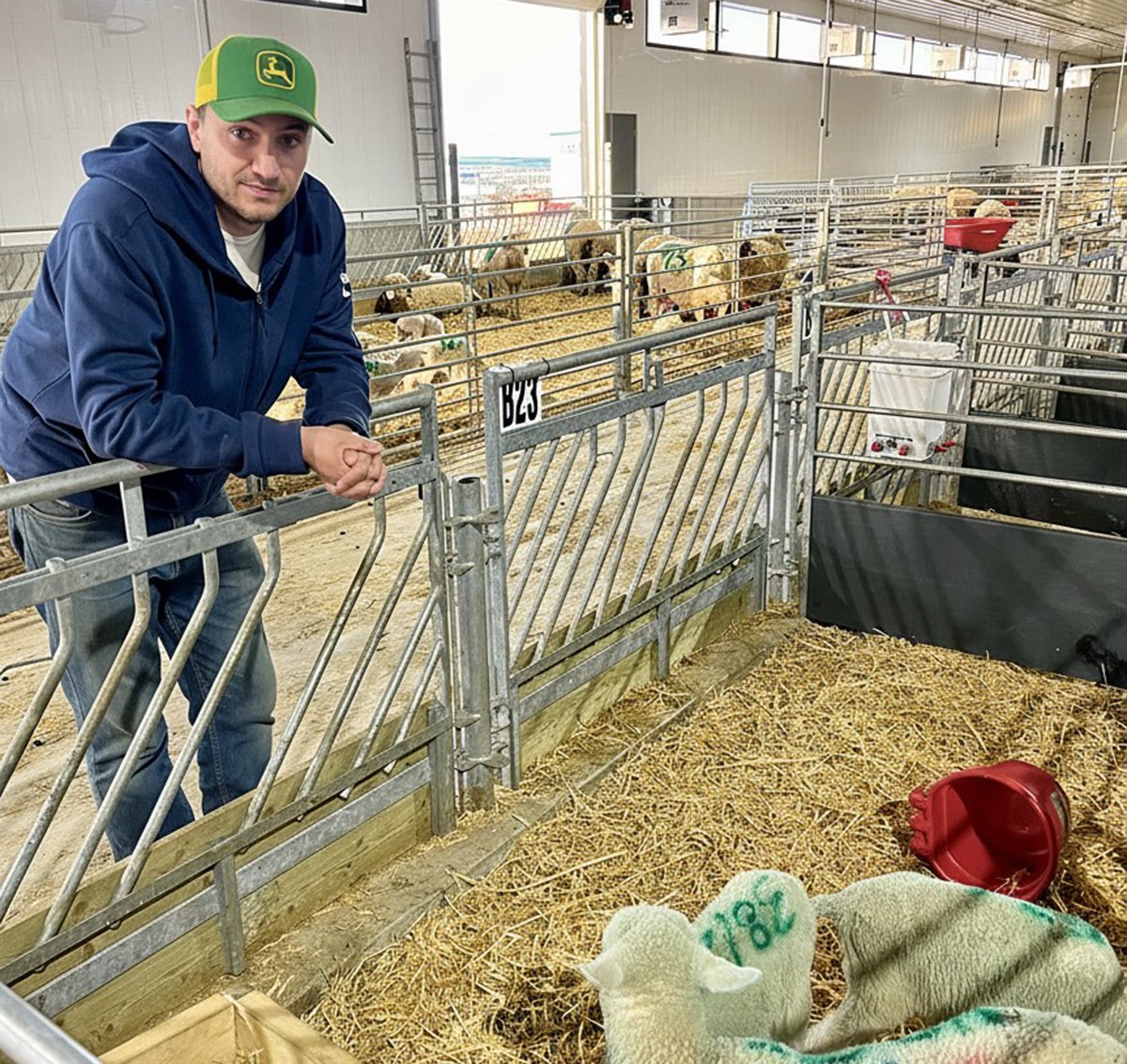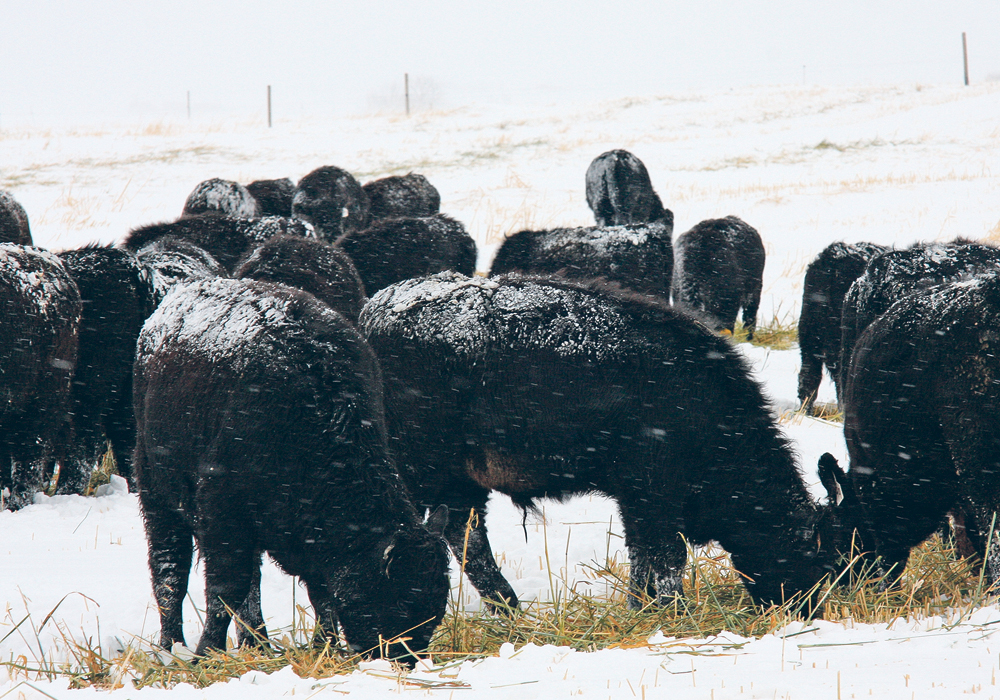SWIFT CURRENT, Sask. — Research into the optimal stage of maturity to swath grain for winter grazing suggests later than previous recommendations.
University of Saskatchewan beef scientist Bart Lardner said producers have typically cut barley or triticale at the soft dough stage and oats at the late milk stage.
But he said those recommendations actually came from the best time to cut cereals for a silage pit.
He told the Foraging Into the Future conference that a small barn metabolism study looking at whether those guidelines applied to grain left on the field for extensive grazing found that later maturity was better.
Read Also

Solar, sheep provide valuable farm diversification
Eric Steeves says raising sheep on forages grown under solar panels provided economic stability and perhaps even saved his family’s fifth generation southern Alberta grain farm.
“There’s a doubling of effectively degradable dry matter, so potentially more nutrient content for the animal to absorb and utilize out in the field,” he said.
The results of that study were tested in a three-year field grazing study that wrapped up last spring.
“We had oat, barley, triticale and moved all three of those from late milk to hard dough, or soft dough to hard dough, collected all kinds of data on the cow, on the yield, on the quality and economics and found, you know what, you’re going to get more grazing days when you go from soft dough to hard dough,” Lardner said in an interview.
The study used a 120-acre field divided into three 40-acre plots seeded to CDC Maverick barley, CDC S01 oats or Taza triticale. Each crop was seeded in early June at two bushels per acre with 50 pounds of nitrogen.
The crops were cut at the previously recommended stages and the later hard dough stage.
The final report on the study is not yet complete, but Lardner said the cows all experienced more positive body weight changes when eating the more mature swaths. For example, cows on oats at the hard dough stage gained 10 kilograms more than the cows on the oats cut at the late milk stage.
Animal grazing days increased on all the later-stage crops through the three-year study. For oats, the number of days increased from 69 to 89, while for barley the number rose from 61 to 70 and for triticale, from 89 to 94.
Lardner said extensive feeding practices continue to gain traction among producers because costs are lower than dry lots. About two-thirds of Saskatchewan producers responding to the Western Canadian Cow Calf Survey said they use some type of winter grazing.
He reminded producers to make sure they have protection from wind and snow so the cow remains in good condition prior to calving.
“Don’t jeopardize condition for lower feed cost per day,” he said.
Lardner also told producers to consider adding non-bloat legumes to their pasture systems to increase the quality and help reduce greenhouse gases.
“Maybe we can mitigate emissions of methane in grazing cows by incorporating those non-bloat legumes into our long-term pasture systems,” he said.
Legumes reduce the need for costly fertilizer applications, he added.
Lardner said producers around the world are looking at better ways to graze their cattle.
Double cropping, intercropping and extensive grazing are ways to stretch out the season, and grazing systems will vary by region.
“Can we grow corn and have a legume in between rows? Can we have a greenfeed crop followed by maybe a fall rye?” he said. “Are we able to grow a crop that we seed in spring, take it off maybe in early summer and seed back to a winter type of crop?”
He said researchers hope to take a look at some of these ideas now that the Livestock and Forage Centre of Excellence is up and running.
















